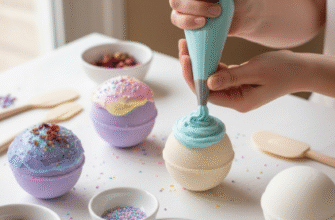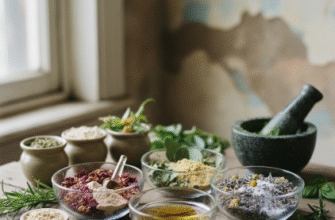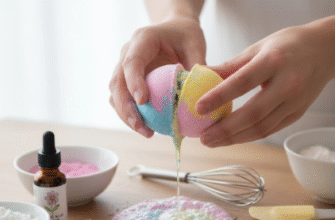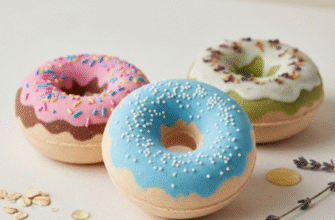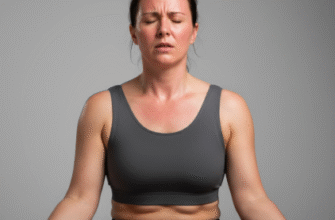Ouch! That familiar sting and radiating heat after a little too much fun in the sun. Sunburn is nobody’s friend, leaving skin feeling tight, irritated, and desperately thirsty. While prevention is always the best approach (hello, sunscreen and shade!), sometimes we slip up. When that happens, reaching for something cool and soothing is the top priority. Forget expensive after-sun lotions packed with ingredients you can’t pronounce; nature often provides the simplest and most effective relief. Enter the humble, yet powerful, Aloe Vera plant.
For centuries, Aloe Vera has been hailed as a go-to remedy for skin discomfort, particularly burns. Its thick, clear gel is packed with goodness that your sun-stressed skin will drink right up. Making your own fresh Aloe Vera gel mask is surprisingly easy and offers immediate cooling comfort that feels simply amazing on tender skin. It’s a fantastic way to harness nature’s soothing power right in your own kitchen.
Why Aloe Vera is Your Sunburn Soothing Superstar
What makes this succulent plant so special for sun-baked skin? It’s not just folklore; Aloe Vera gel boasts a unique composition that makes it incredibly effective for providing comfort. First and foremost, it’s incredibly hydrating. Sunburn essentially dehydrates the skin barrier, leading to that tight, uncomfortable feeling. Aloe gel is mostly water (over 99%!), delivering much-needed moisture directly where it’s needed most.
Beyond hydration, Aloe Vera has renowned cooling properties. Applying the gel feels instantly refreshing, helping to take the edge off that burning sensation. This immediate cooling effect provides significant relief when your skin feels like it’s on fire. Think of it like a cool compress, but one that’s also delivering beneficial compounds.
The gel also contains a wealth of vitamins, minerals, amino acids, and antioxidants. Key components like vitamins A, C, and E are potent antioxidants that can help support the skin. It also contains compounds like polysaccharides that help with moisture retention and create a protective barrier, plus glycoproteins that can contribute to the soothing sensation. While we are focusing on comfort for mild sunburn, these components work together to help your skin feel better, faster.
Harvesting Fresh Gel vs. Using Store-Bought
You have two main options for sourcing your Aloe Vera gel: harvesting it directly from a plant or purchasing pre-extracted gel.
From the Plant: The Freshest Option
Using gel straight from an Aloe Vera plant is ideal as it guarantees purity. If you have a mature Aloe Vera plant (look for thick, fleshy leaves), here’s how to harvest the gel:
1. Choose a healthy outer leaf: Select a thick, lower leaf near the base of the plant. These are usually the most mature and contain the most gel.
2. Cut cleanly: Use a sharp, clean knife to cut the leaf close to the stem.
3. Drain the Aloin: This is important! Stand the cut leaf upright in a glass or bowl for about 10-15 minutes. A yellow latex substance called aloin will drain out. Aloin can be irritating to some people’s skin, so it’s best to discard it.
4. Wash the leaf: Rinse the leaf thoroughly after the aloin has drained.
5. Trim the edges: Carefully cut off the spiky edges of the leaf.
6. Fillet the leaf: Lay the leaf flat. Slice off the top green layer of skin, revealing the clear gel inside. You can then use a spoon or knife to scoop the gel out. Alternatively, you can slice the leaf lengthwise and scoop the gel from each half.
7. Blend (optional): The scooped gel might be chunky. For a smoother mask consistency, you can briefly blend the clear gel in a blender or food processor until smooth.
Store-Bought Gel: Convenience with Caution
If you don’t have a plant, you can buy Aloe Vera gel. However, it’s crucial to read the label carefully. Look for products that are 100% pure Aloe Vera gel or as close to it as possible. Avoid gels that contain alcohol (which can be drying and irritating), artificial fragrances, or excessive colours and fillers. Look for terms like “cold-pressed” and check the ingredient list – Aloe Vera should be the very first ingredient listed.
Verified Tip: Always perform a patch test before applying any new product, including pure Aloe Vera or a DIY mask, to a large area of sunburned skin. Apply a small amount to an unaffected area (like your inner wrist) and wait 24 hours to check for any irritation or reaction. Sunburned skin is extra sensitive.
Simple DIY Aloe Vera Gel Mask Recipe
This is the most basic, yet highly effective, recipe using just pure Aloe Vera gel.
Ingredients:
Approx. 1/4 cup fresh Aloe Vera gel (scooped and optionally blended) OR 1/4 cup high-quality, pure store-bought Aloe Vera gel.
Instructions:
1. Prepare the Gel: Ensure your fresh gel is free of aloin and blended smooth, or measure out your pure store-bought gel.
2. Chill (Optional but Recommended): For extra cooling relief, place the Aloe Vera gel in the refrigerator for 15-30 minutes before application. The cold temperature enhances the soothing sensation on hot, sunburned skin.
3. Apply Gently: Using clean fingers or a soft brush, gently apply a thick layer of the cool Aloe Vera gel over the sunburned areas. Avoid rubbing vigorously, as this can further irritate the skin. Pat or spread it on softly.
4. Let it Sit: Leave the mask on for 15-20 minutes, or until it starts to feel dry and tight. You should feel a pleasant cooling sensation as it works.
5. Rinse Carefully: Gently rinse the gel off with cool (not cold or hot) water. Pat your skin dry with a soft, clean towel – again, no rubbing!
Enhancing Your Soothing Mask (Optional Add-Ins)
While pure Aloe Vera is fantastic on its own, you can incorporate other gentle, natural ingredients for added benefits. Always patch test any new combination!
Option 1: Aloe & Cucumber Cooler
Cucumber is known for its high water content and cooling properties, making it a perfect partner for Aloe.
Add: 1-2 tablespoons of fresh cucumber juice or finely pureed cucumber (seeds strained out) to your 1/4 cup Aloe Vera gel. Mix well.
Benefit: Extra hydration and enhanced cooling effect.
Option 2: Aloe & Lavender Calm
Lavender essential oil is famed for its calming aroma and skin-soothing properties. Use with extreme caution on sensitive or broken skin.
Add: ONLY 1-2 drops of high-quality, pure lavender essential oil to your 1/4 cup Aloe Vera gel. Mix thoroughly.
Benefit: Adds a relaxing scent and potentially enhances the calming feel. Perform a patch test without fail, as essential oils can be irritating for some, especially on compromised skin.
Option 3: Aloe & Vitamin E Moisture
Vitamin E oil is a potent antioxidant known for its moisturizing capabilities.
Add: The contents of one Vitamin E capsule (pierce and squeeze out the oil) or a few drops of pure Vitamin E oil to your 1/4 cup Aloe Vera gel. Stir well.
Benefit: Boosts antioxidant levels and adds extra moisture to combat dryness.
How to Apply Your DIY Mask for Maximum Comfort
Getting the application right ensures you receive the maximum soothing benefits without causing further irritation.
Cleanse Gently (If Necessary): If your skin feels grimy, gently cleanse with cool water and a very mild, soap-free cleanser before applying the mask. Otherwise, applying directly to the skin is fine.
Use Cool Gel: As mentioned, chilling the gel beforehand makes a world of difference. The cold provides immediate relief to hot skin.
Apply Thickly: Don’t be shy! Apply a generous layer. You want enough gel to sit on the skin and provide sustained cooling and hydration.
Find a Comfortable Spot: Lie down or relax while the mask is on. This prevents the gel from dripping and allows you to focus on the soothing sensation.
Timing is Key: Stick to the 15-20 minute timeframe. Letting it dry completely can sometimes feel uncomfortably tight on sunburned skin.
Gentle Removal: Use plenty of cool water and gentle splashes or pats to remove the mask. Avoid washcloths, which can be abrasive.
Pat Dry: Always pat your skin dry with the softest towel you own. Rubbing will aggravate the burn.
After-Mask Care: Keep the Comfort Going
Removing the mask isn’t the end of the process. Sunburned skin needs ongoing care.
Moisturize Again: After rinsing and patting dry, apply another layer of pure Aloe Vera gel or a very gentle, fragrance-free moisturizer designed for sensitive skin. This helps lock in moisture.
Stay Hydrated: Drink plenty of water! Hydrating from the inside out is crucial for skin recovery.
Wear Loose Clothing: Opt for soft, loose-fitting clothes made from natural fabrics like cotton to avoid friction on the sensitive skin.
Avoid Further Sun Exposure: This seems obvious, but keep the affected area completely out of the sun until it has fully recovered. Wear protective clothing and stay in the shade.
Important Warning: This DIY mask is intended for soothing the discomfort of mild sunburns (redness, warmth, slight tenderness). If you have severe sunburn with blistering, intense pain, chills, fever, or dizziness, please seek professional medical attention immediately. Home remedies are not sufficient for severe burns, which carry risks of infection and complications.
Embrace Natural Soothing
Dealing with the aftermath of too much sun is never pleasant, but having a simple, natural remedy like a DIY Aloe Vera gel mask can make a significant difference in your comfort level. It’s affordable, easy to make, and harnesses the incredible cooling and hydrating power of this amazing plant. Remember to be gentle with your skin, listen to its needs, and prioritize sun protection next time. By using fresh, pure ingredients, you provide your skin with immediate, cooling relief straight from nature, helping you feel better while your skin recovers from that accidental overexposure.

